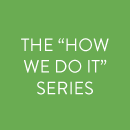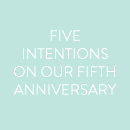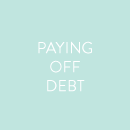29 August 2019
Two and a half years ago, I shared with you our plan for paying off our mortgage early. In that post, I walked you through our journey up until that point, from simply making extra payments each month to investing the extra payment in a brokerage account. Over the last year there’s been a new plot twist (as I alluded to in this post!), and I’m happy to pull back the curtain today!
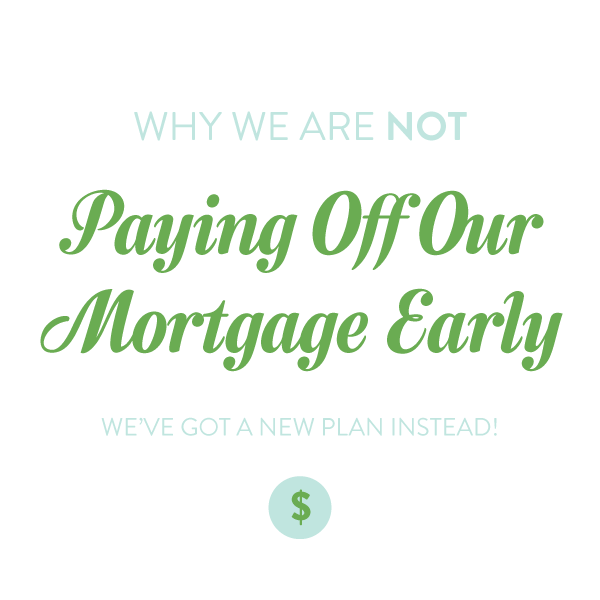
Let’s look at a timeline, shall we?
Spring 2013: We buy our house! We pull together a 13% down payment.
Fall 2014: After paying off our car loans, we use about half of what we had been paying to make an extra mortgage payment each month (directly to the bank), and the other half to build up a fund for our next car purchase.
Fall 2015: Car fund complete, we shift the amount we’d been paying toward our mortgage, too. Instead of paying down our mortgage directly, though, we begin transferring the extra monthly amount into a brokerage account and invest it in a mutual fund.*
The main critique of paying off a mortgage early is that it doesn’t make sense to pay off a low interest rate mortgage when you could be earning higher rates of return by investing. We still planned to pay ours off early, but ALSO wanted to take advantage of compounding interest by investing the extra payment instead of applying it directly to the mortgage. We were comfortable with the extra risk that exposed us to (and the extra willpower it required of us!).
When we saved enough to pay off our mortgage, we would pay it in one lump sum. Hooray, right!?
My husband, though. He’s always thinking. And last year, he came to me with a suggestion: what if, instead of simply saving the amount we needed to pay off our mortgage and then handing it over to the bank in one huge sum, we saved a little longer – maybe two or three years, maybe less, maybe more (depending on the market’s performance). If we could wait just a few years longer, then we would have amassed a large enough amount of money that, carefully invested, the returns themselves would be large enough to cover our monthly mortgage payment, meaning our mortgage would no longer need to be a part of our household budget.
It would be as if we had paid off our mortgage, and yet, we’d also be realizing these other benefits:
1. We would not lose the mortgage interest tax deduction (less of an issue under current tax law).
2. By the miracle of compound interest, in 23 years, when we make the actual final payment, our calculations project we should still have anywhere from 50% to 150% of the money we started with (!!!).
3. That large remaining lump sum could then be used to pay for kiddo college tuition, a rental property, a fabulous vacation, some really extravagant generosity, or – most likely – all of the above.
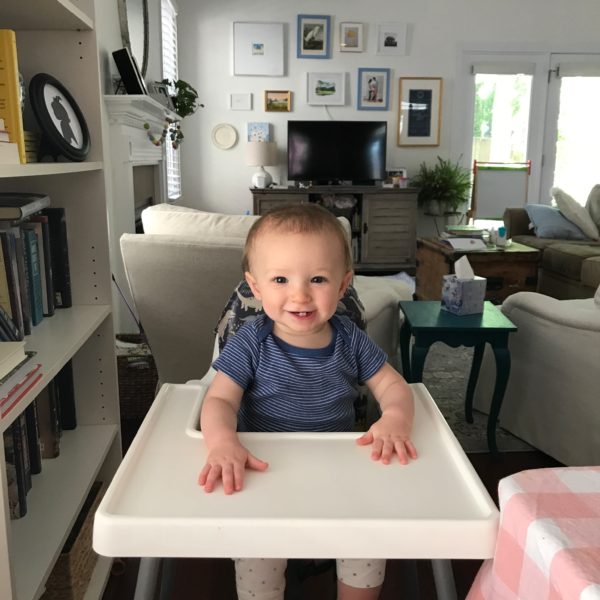
A mostly unrelated but highly adorable photo of Shep and our home
When John first presented this plan, I was not particularly enthused – all I heard was “a few more years of saving” and no “we’re debt freeeeee!!!” scream. (Because technically we wouldn’t be, and it would be weird to scream “we have XXX in our bank account!!!”)
But John’s desire was to make the most of our years of sacrifice, because we both desire to be good stewards of our money. This sounds harsh, but to work so hard to save so much and then sink it directly into a illiquid asset like a home instead of allowing it to continue to grow seemed like a squandering of possibility. If we could steadfastly reach this goal at a relatively young age, it would behoove us to continue that momentum instead of slamming on the brakes by sinking it into our home.
Okay – I was on board. And maybe you’re nodding alongside me right now. This all sounds good, right?!
Here’s the HUGE X factor – with this iteration of the plan, like the last one, we are vastly more exposed to the market than we would be if we were making payments directly to the bank each month. As I talked about in this post, by making those payments directly, it’s like getting a guaranteed 4% (or whatever your mortgage interest rate is) return – nothing thrilling, but respectable for zero risk. Our approach requires accepting that the money we’re socking away could actually lose value – and that’s why we don’t know exactly how long it will take us to reach our goal.
Worth mentioning at this juncture: if you like the idea of trying something like this, I would highly recommend working with a financial advisor (and one who understands what you’re trying to do). Of course, it’s possible to make investment decisions on your own, but I don’t want to give you the impression that it’s just little Miss Creative Director over here knowing all the things and that you should be able to do the same. John IS a financial advisor, and if he weren’t, we would definitely be seeking expertise on decisions of such magnitude.
A final word of caution, the same one I gave in my last mortgage post: I would only consider doing our “next level” system if you have a long track record of steely willpower with your money. It is so tempting to just take a little here or there as you watch that fund grow and other needs come up. If you’re nervous you’d be tempted or don’t want to stomach the risk, just apply the extra payments straight to your mortgage – done and done. Also a fantastic option.
I want to end by saying I realize this post is Marvelous Money 301. It’s a more advanced topic than I usually touch on, and perhaps it feels wildly out of reach for you right now. I get that. I share this not to brag (!!!) or make you feel defeated (hopefully you know that!), but to stretch your imagination of what’s possible, and perhaps plant in you an idea that you’d never heard of before.
My next MM post (series!) is going to be squarely back at the 101 level, and it’s the most-requested topic that I’ve yet to touch on: investing 101! I can think of few topics that are simultaneously as intimidating and as powerful. I’m excited to dig in :)
*Earlier this year, as an experiment, we shifted our money from mutual funds into a managed account. We’ll talk about this more in the forthcoming investment series!
A final reminder: I am not a financial professional, and nothing I say here should be construed as investment advice! I’m just one gal sharing her story :)
30 April 2019
If money doesn’t make you happy, you’re probably not spending it right.
Of course, money on its own will never satisfy, and it will never fill the deep well reserved for God and people. But spent thoughtfully, within a budget, and according to your values, I believe your purchases can and should make you happier. (After all, even the quotidian stocking up of paper towels still gives me a brief buzz of adulting joy!)
But, looking back over my decade-plus career as the manager of my own purse strings, there are certain items that I still look back on, years later, and think to myself, “I am SO GLAD I spent money on that.” Here are ten of them. I hope my list encourages renewed gratitude for your own favorite purchases, and with your list in front of you, see if you can find any common threads in what you value most highly – and then let those threads guide your future purchases!
In no particular order…
1. Our tan sofa. We bought our sofa from Macy’s in 2011 for $700 delivered, about a year after John got his job. Before that, our living room contained one seating option – our white loveseat from Ikea, purchased midway through college. This purchase represented one of our first big leaps into adulthood, and we saved for months and months to afford it. It is incredibly comfortable, the velvet fabric is impervious to stains, and the practical color hides the dust of daily life effectively. It still looks fantastic after eight years; we hope to have it for many more.
I chuckle when I think about a sweet reader’s comment I got many years ago – something along the lines of, “wait until you get rid of that brown couch – then your room will look really good!” Though you could read it as rude, it didn’t bother me at all. I just thought to myself, “sister, if only you could sit beside me on this here brown couch, you’d know why I’m never getting rid of it” :)
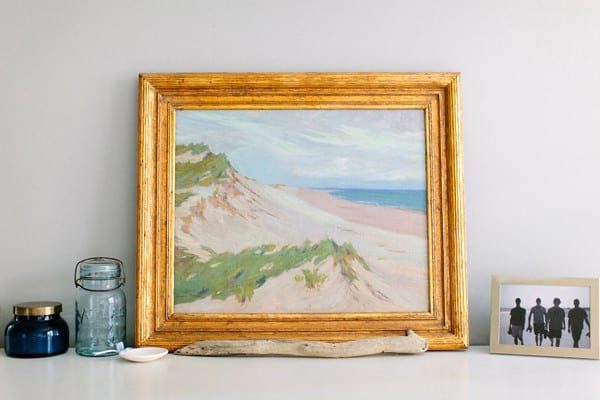
2. Our dunes painting. My wedding gift to John was an original painting I found in a small shop in our Connecticut hometown in 2011. It already had a lovely frame, and I think the price was about $400. It was more than I had budgeted for his gift, but the moment I saw it, I fell in love – it reminded me of his beloved Michigan dunes. I loved the idea of his wedding gift being something we’d keep forever, as opposed to a piece or clothing or an accessory he might wear out. I also felt VERY grown-up purchasing an original piece of art, and there was something sweet about finding his gift so unexpectedly in our tiny hometown, the place where our story began many years before. The painting now hangs on our bedroom wall.
3. My dresser. In 2014, I spotted a low, cream dresser an acquaintance was selling on Instagram. Maybe it was the way she had merchandised it (she’s a photographer!), but I instantly knew it was a piece I’d love for a long time. At $200, I also knew it was a steal. Taking full advantage of our fun and fancy-free pre-baby life, we rented a truck from Home Depot and drove over to Greensboro to bring it home (out-of-nowhere rain storm on the way home and all!). It took ALL of my might to get my end up our front steps (that sucker is HEAVY), and it’s lived happily in our master bedroom ever since. It’s the kind of piece that could look good anywhere, and I plan to have it forever (not the least because I never want to move it again). Peep it in the background here.
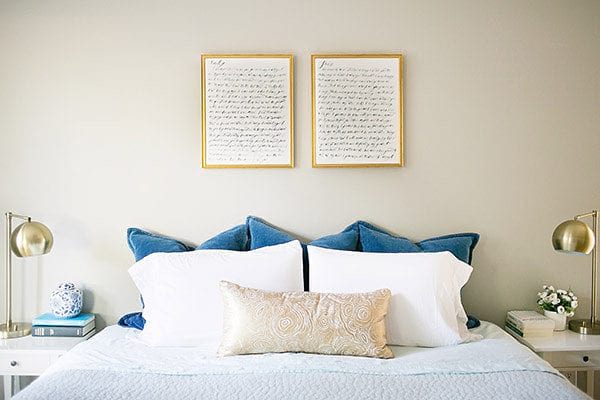
4. Our mattress. Late in 2014, John convinced me to get a King-sized mattress. I was opposed to the idea at first – why would he want to be further away from me?! – but eventually gave in. We trotted down to our local Mattress Warehouse and tried out all the options in the store, finally settling on one we both loved after a good hour of reclining on various options. The price – $1,600 – was a little more than we had been planning to spend, but we were confident this was the one for us.
We called the salesperson over. He looked at the tag, and then did a double-take. He explained that there had been a mistake, that the tag on our mattress had been switched with another one and that our mattress was actually supposed to be $2,500. After confirming with his manager, however, he graciously honored the price and let us take ours home for the lower price.
Now, I don’t know if this was some sort of elaborate sales technique to make us think we got a great deal. (Kudos to them if it was!) What I do know is that pretty much every night since, John and I have looked at each other before turning out the lights and said, “I love our bed.” Given the importance of a good night’s sleep and based on how much we love our mattress, I’d have gladly spent $2,500 on it… but I’m glad we didn’t have to :)
5. Our laundry baskets. 2014 was a big year for beloved acquisitions! There are a number of reasons that could be so, but here’s one: in 2014, we had recently paid off my student loans, were rapidly making progress on our car loans, and were looking forever to putting our full efforts toward our mortgage. Every dollar was aggressively scrutinized; if one was going out the door, you can bet it was for something we were all in on.
Which brings us to our laundry baskets. I spotted them at Home Goods on Black Friday, and even though I remember hesitating over the price ($50 for 2!), I brought the wicker pair up to the register. Like several other purchases on this list, there was just something that spoke to my soul about replacing our mismatched college bins with a matched, grown-up pair. We use and love them to this day.
6. My favorite jeans. I wrote an entire post about these jeans, so you know they’re beloved. In the throes of post-second-pregnancy life, the angels sang when I slipped them on. Great quality, the right amount of stretch, a fab high waist, denim that feels SO GOOD on, and a more-than-fair price point (I got mine for $60 on sale!). Confession time: I wear them 5/7 days a week, emailed customer service to request they make a white version, and have convinced a handful of friends and family members to buy their own pairs. Maybe you’re next? :)
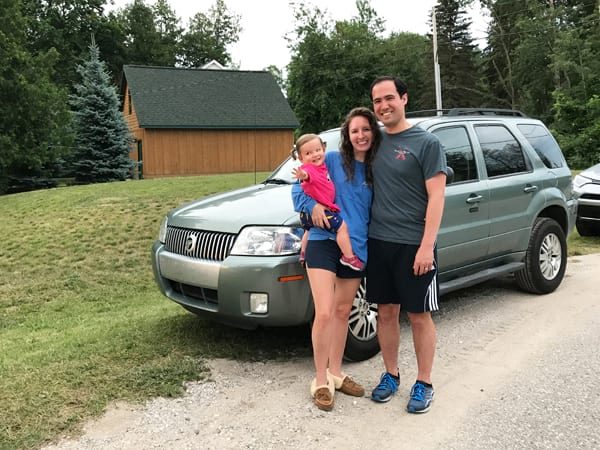
7. My first car. Maybe it’s on the list because I was really hoping for an SUV but thought I could only afford a sedan. Or maybe because it was incredibly comfortable, the best road trip companion for my many trips around the South. Or maybe because it was, after all, my very first car, and negotiating its purchase on my own is one of the most grown-up things I’ve ever done. For whatever reason, my Mariner will always be one of my most beloved purchases. I would happily still be driving it today if the transmission hadn’t died the last time we were in Michigan – see above for our farewell family photo!
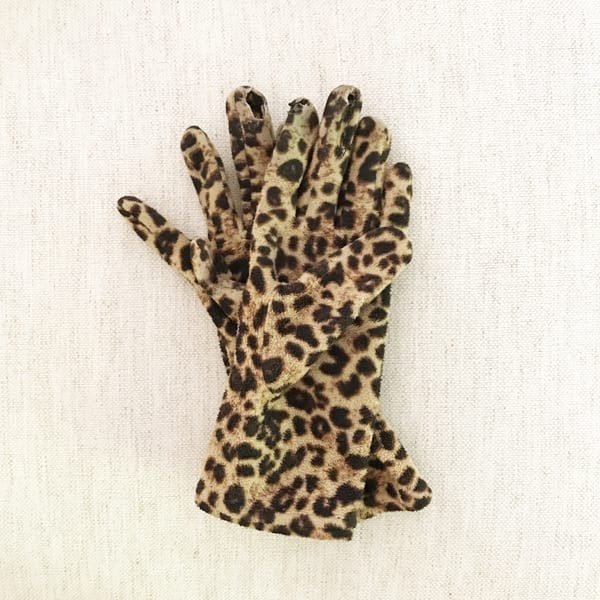
8. My leopard-print gloves. At $5 from Walmart, purchased while still at college, these beauties win the “most bang for my buck” prize by a landslide – especially considering I’ve worn them every winter for approximately the last twelve or so years. With holes in several of the fingertips, my family likes to joke that these were my texting gloves before texting gloves existed. They’re simple, they’re chic (well, aside from the holes), and when I find something I love, I tend to wear it into the ground.
9. Our TV console. A newer addition to the family, our console joins the list because it solved a problem I had been puzzling over for more than a year. With one fortuitous trip to Home Goods, it brought style, organization, and a much-needed additional surface to our living room in 2018. I searched every retailer known to man for more than a year, almost pulling the trigger on pieces three times as much as this one ($430) multiple times, but I am SO happy I didn’t settle for something I didn’t love.

10. Our Le Creuset. Last but certainly not least is our Le Creuset dutch oven. Back in February 2012, we were throwing our very first dinner party together – a Julie & Julia themed event for four couples with boeuf bourguignon on the menu.
Needless to say, we were anxious new hosts, and in a spontaneous flurry of nerves, we decided we needed this exact pot on the morning of the party. We dropped $140 on it like it was nothing, which makes me laugh to this day – because $140 was most definitely NOT nothing at that time in our lives, and nothing but the nervous desire to have everything go right for this big event could have made us make this sort of spur-of-the-moment purchase. Happily, we have used this very pot to cook thousands of meals since, and considering it’s Le Creuset, I’m confident we’ll use it to cook thousands more – and smile every time we remember the reason it joined our family :)
What would be on your list? I’d love to hear!!
Affiliate links are used in this post!
4 October 2018
Today’s Marvelous Money topic is narrow in scope, but potentially huge in impact! It’s not something that was on my radar until John introduced the idea, and so I figured it might be the same for some of you. Basically, a Health Savings Account is the most “tax-preferenced” savings vehicle in the U.S. right now, and it’s something you should definitely consider taking advantage of! Let’s chat about why.
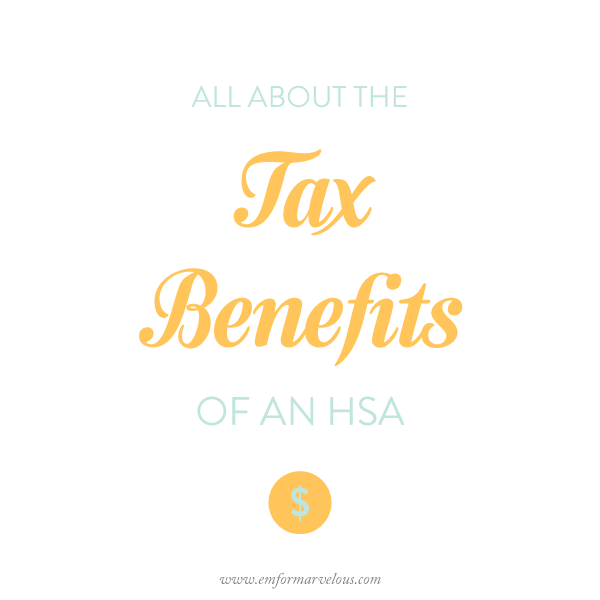
Of course, before you can take advantage of an HSA as a savings vehicle, you have to make sure it’s the right fit for you for its primary purpose: as a form of health insurance! That’s something only you can determine, but if you’re of average health, it’s worth considering.
An HSA is used in tandem with a high-deductible health insurance plan. A high-deductible plan means you pay a lower premium — the monthly cost of your insurance — but you are responsible for paying for expenses up to your deductible (currently defined as at least $2,700 for a family) and potentially up to your out-of-pocket maximum (at most, currently, $13,300 for a family). An HSA comes alongside your insurance plan to help you save for these expenses.
There are four main financial benefits of a Health Savings Account:
1. Your contributions are tax-free. Contributions to your HSA are 100% deductible (up to a max of $6,900 for a family in 2018). Because income is taxed after you make HSA contributions, you will be taxed as though you make less money — for example, if you make $50,000 per year and put $5,000 into your HSA, you will be taxed as though you make $45,000, lowering your tax burden.
HSA contributions are actually considered SUPER tax-free, because they are both income tax-free AND payroll tax-free! This all helps to reduce the amount you pay in taxes.
2. Your withdrawals are tax-free. Withdrawals to pay qualified medical expenses, including dental and vision, are never taxed.
3. Your earnings are tax-free. An HSA is an investment account (with the freedom to access mutual funds, stocks, or other vehicles of your choice) with the expectation that the money you invest will grow over time to help you pay medical expenses in the future. If and when it does, and you use it to pay qualified medical expenses, you won’t pay any taxes on it.
4. The money is yours. Unlike a flexible spending account (FSA), unused money in your HSA isn’t forfeited at the end of the year. It rolls over and continues to grow tax-free year after year.
Basically, an HSA combines ALL of the best tax advantages possible, while giving you the opportunity to save for future expenses you will almost certainly incur — since the average couple retiring at age 65 will spend $280k in medical expenses over the course of their retirement.
And, if at age 65 your HSA investments are super-successful and you have more money socked away in your account than you could ever need for medical expenses? You still have the option of withdrawing the money for any purpose and only paying regular income taxes (as you would with a traditional IRA). If you do so before 65, you’ll pay a hefty penalty.
As you may have guessed, an HSA and high-deductible plan is the health insurance option we’ve chosen for our family! Thanks to John’s employer, we are lucky to have a low out-of-pocket maximum, which makes an HSA pretty much a no-brainer for us. When we first opened the account, we started by contributing the out-of-pocket maximum each year (for us, lower than the IRS limit). Now, we’re able to contribute up to the limit — it’s our second savings priority after making sure we get our 401k employer matches. (Our mortgage savings account is third.) As with all investment accounts, the more we can put in now, the more time it has to grow, and the more we can make our money work for us!
P.S. If your health insurance is through your company, check to see if your employer will contribute to your account – many do!
Friends, I’d love to hear: do you have an HSA? Have you been able to take advantage of it as a savings vehicle?
More Marvelous Money:
The cost of our first year with a baby
Managing money together
26 ways to save money
Our car fund
11 September 2018
When we shared a few months ago that Southern Weddings was retiring, I promised that I’d always be available to offer wedding planning advice. After all, weddings are my first love, and I’ll never tire of chatting about them! Today’s Marvelous Money topic is giving me the perfect opportunity, falling as it does at the intersection of celebrations and personal finance. From Judy, the reader who emailed me:
I’m engaged and getting married in just a month, and I’ve been thinking a lot about how the wedding fits into our overall financial priorities. My fiance and I are lucky to share similar views as you and John – pay off debt fast, save a lot, and spend only on things that bring joy. I am so excited for the wedding, but I’ve been having a hard time justifying some expenses in the perspective of our broader financial goals. Should we really pay for several hundred dollars of chair rentals, or just deal with less-than-ideal chair covers? Should I feel guilty about wanting peonies in my bouquet? Will prettier chairs actually be better than putting that money towards a vacation or retirement?!
I would love to hear your perspective on how you decided which parts of your vision were worth it, what you chose to forgo for practicality, and how you dealt with any complicated feelings about spending extra money on a wedding instead of saving for retirement or other more “practical” things. I know weddings are worth spending money on to honor the sacrament of marriage and celebrate with friends and family, but it’s so hard to know what it worth it, and what’s too far!
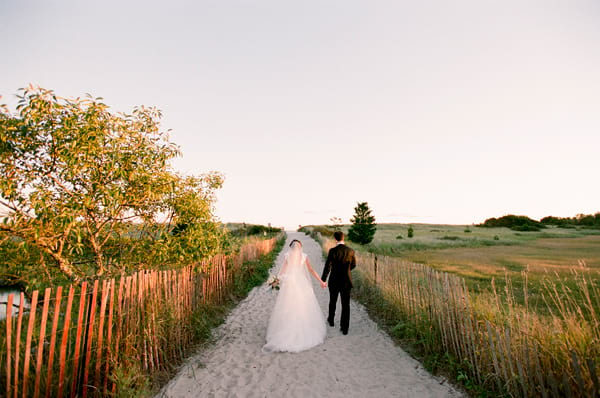
I love this question, because it has legs far beyond wedding planning — it will come up over and over again for anyone who follows a budget or has big money goals. (For us, currently, it looks like deciding how much we should prioritize making aesthetic upgrades to our living room.) But let’s break down Judy’s specific question a bit:
How we decided which parts of our wedding vision were worth it:
It sounds like a bit of a circular answer, but our spending priorities were the things that brought our vision most powerfully to life. In the first place, we had a very clear vision for how we wanted our easy-elegant-classic-garden party-seaside wedding to feel. From there, we identified the things we thought would add to it most strongly: our location, our tent, our band, and our caterer and chosen method of catering. A view out to the ocean, an airy, elegant tent, a live band playing swing music, and waiter-passed food versus a sit-down dinner: these things were fitting for our story as a couple and created a memorable experience for our guests, and so they were worth spending on (for us).
Don’t get me wrong: the micro decisions, like chair covers or peonies, were in some cases excruciating to make! But circling back to our overall vision always helped us align our priorities.
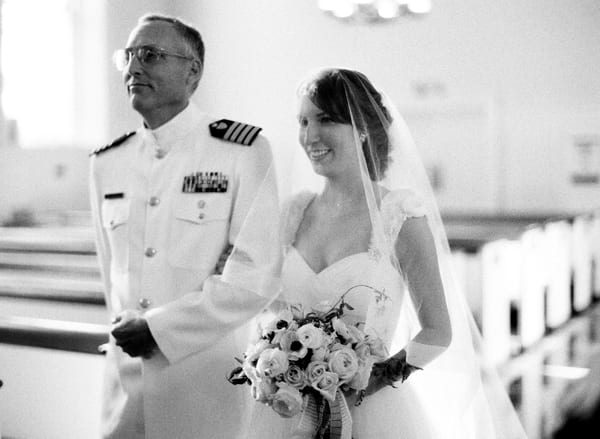
What we chose to forgo for the sake of our future finances:
We cut back or saved in areas that would not contribute significantly to our vision or the experience of our wedding. We served just beer and wine at cocktail hour, we added no decor to our beautiful chapel, I made our signage with scrap paper and addressed the envelopes myself, we played a custom CD at cocktail hour, we drove our own car instead of renting a vintage one, and I sold my dress to recoup more than 50% of the cost — to name just a few things.
We also knew the exact budget we had to work with, so we knew if we wanted to splurge somewhere, we’d have to cut back elsewhere. A money mindset shift that helped when we were feeling sorry for ourselves: it’s not that we couldn’t afford XYZ, it’s that XYZ wasn’t a priority for us. (This is a powerful shift for all budget followers!)

One major area where we did splurge without regret was our photography and videography. As someone who has consumed wedding images daily for literally decades, I have extremely high standards and very particular opinions. I wanted our wedding captured in a particular way, and I am so grateful we prioritized it – the photos and videos match perfectly with how I remember our wedding, strengthening my memories even six years on.
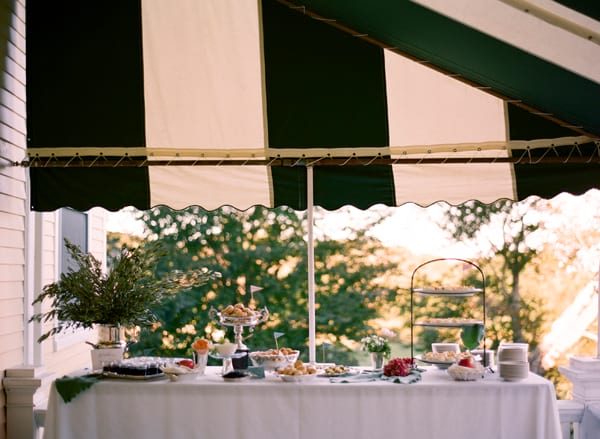
Why we decided to spend money on a wedding at all:
Our wedding was a magical day, a touchstone we will return to for the rest of our lives. It was a chance to honor and celebrate our community, to paint a picture of the beauty of the gospel, and to say to the world, this is who we are and who we will be, and this is what matters to us.
For all these reasons and more, we placed a high value on celebrating our marriage, and so we made it the first financial priority as we began our life together — as important as saving for a down payment or paying off student loans. Those things were so important to us, too, but only after the most important relationship we’ll have in this life was honored in the way we felt best.
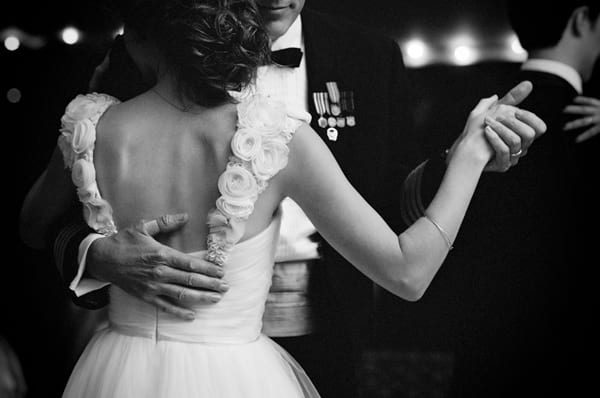
You may or may not feel the same way. (I have two dear friends who chose elopements, and that was the perfect choice for both of them.) This all might sound incredibly silly to you, even!
Though I’m confident we could have celebrated well with a bigger or smaller budget, I don’t regret the amount we spent. After all, the point of budgeting and saving money is to have money for what’s most important to you. As people passionate about personal finance, John and I tend to highly prioritize our future selves. Our wedding was a good reminder that we only get one chance at certain things in life, and they don’t always line up neatly with when we have tons of extra cash lying around. From one frugal person to another: spend on the things that matter deeply to you — you’ll never regret it as long as you only spend money you have.
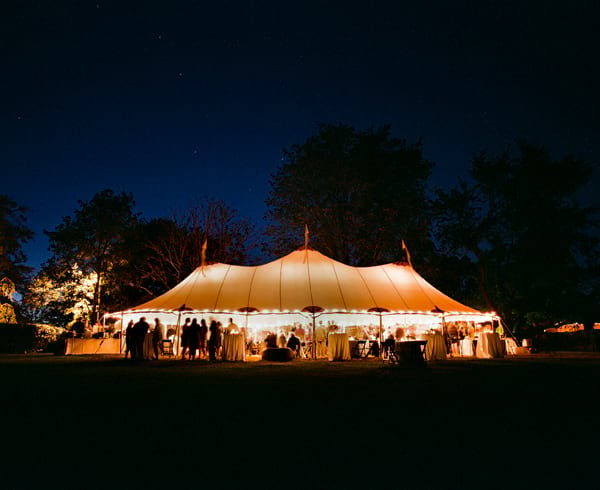
Friends, I’m laughing at myself because I tried to make this post as concise as possible and it’s still a novel! I hope it’s helpful, whether you’re currently planning a wedding or debating some other noble use for your money! I’d love to hear: if you’re married, what was the best thing you spent money on at your wedding, large or small?
P.S. Our sixth anniversary is on Saturday! I have another wedding-themed post coming up later this week :)
All photos by the wonderful Tanja Lippert


























